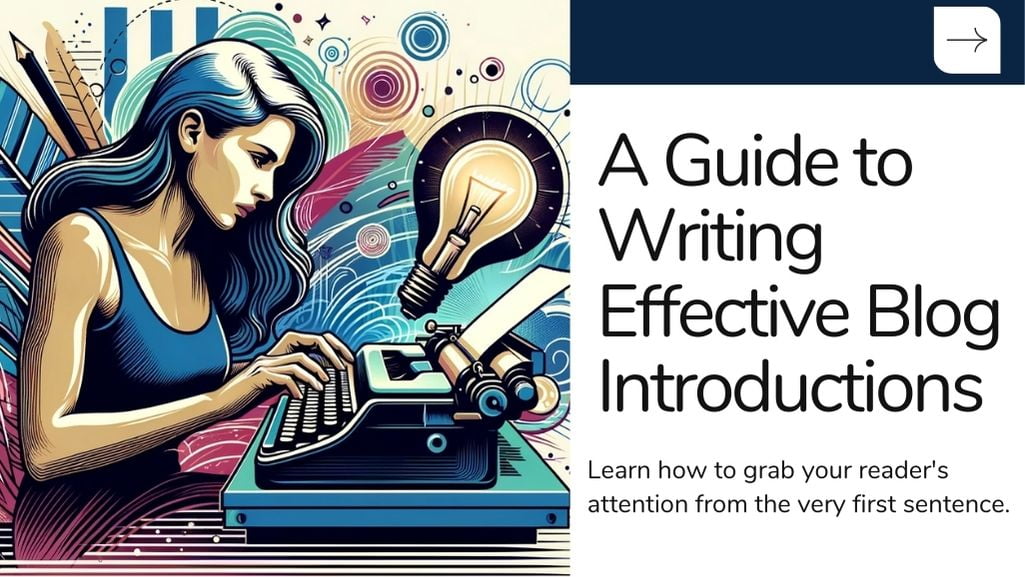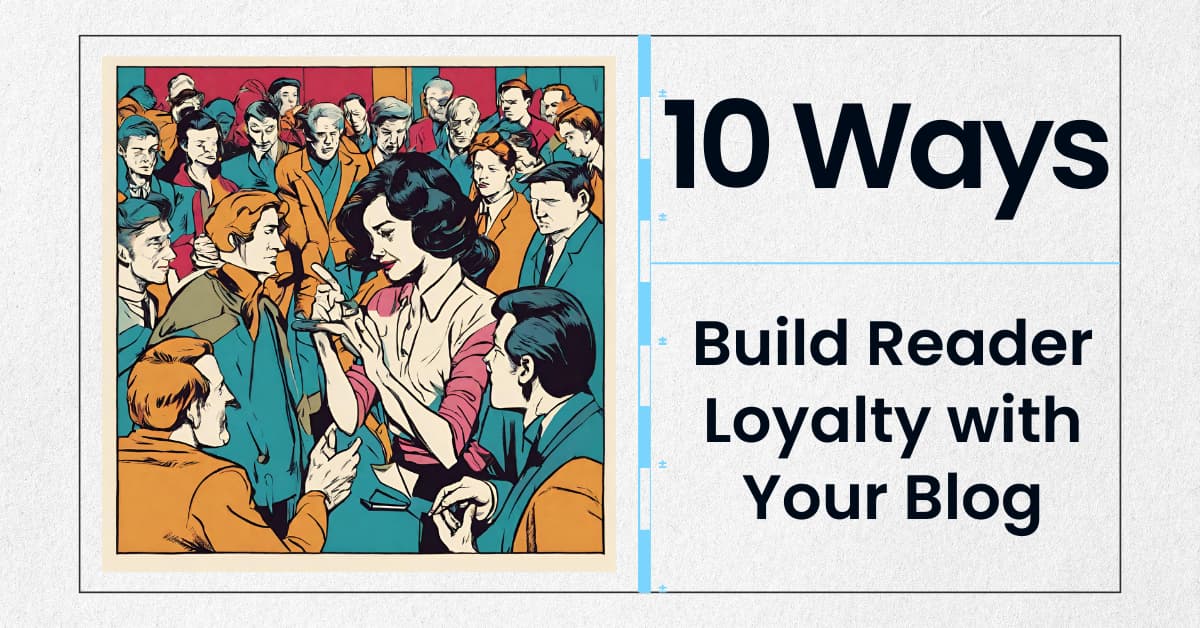You know that rush of excitement when you find a secret path to success?
I’m handing that to you now—a master key to grabbing reader attention through the most overlooked door – your article’s introduction.
Picture this: with just a few targeted keyboard taps, you’ll latch onto your reader’s curiosity, refusing to let go.
This isn’t just another article; it’s your map to making introductions that turn casual readers into loyal fans.
So, are you ready to turn that online doorknob and shoot your content into the spotlight?
Let’s get started.
Crafting the Perfect Introduction
Imagine walking into a room where everyone’s discussing the latest, most essential topic in your field.
That’s how your blog’s introduction should feel – it’s the handshake, the eye contact, the first few sentences that can either clinch the reader’s curiosity or see it wander elsewhere.
A stellar introduction does more than simply start a post; it’s the opening act of a performance meant to captivate your audience.
It’s where you set the stage, present the main character – your topic – and hint at the transformative journey ahead.
Key Elements and Goals of Engaging Introductions
The very first goal of your blog’s opening is to build anticipation. Think of it like the aroma of coffee in the morning – it draws you in and promises something robust and fulfilling.
When you tap into the reader’s anticipation, you’re winding up a clockwork of curiosity that keeps them reading.
Secondly, you’ve got to address their pain points, but not just any pains – the ones that keep them up at night, the challenges that lurk in the backs of their minds.
By highlighting these problems up front, you signal that you’re here with solutions, and suddenly, you’re not just another voice on the internet; you’re a guide through the chaos.
As you dive deeper, establishing credibility and authority becomes key.
It’s like when a chef tells you they’ve cooked for royalty – you immediately take their next words more seriously.
Integrate innate credibility with statistics and facts to back up your points.
Numbers have weight; they add gravity to your words and lend an air of expertise.
Literary Devices and Creative Techniques
Now, imagine your introduction as a mosaic. Each piece is a word or sentence, and literary devices are the colors that bring the picture to life.
Metaphors and analogies add depth to your narrative, allowing the reader to see ordinary concepts in a new light. A well-crafted metaphor can serve as a mental shortcut to understanding complex ideas.
Anecdotes and real-world examples are the guiding stars that lead readers through the unclear skies of theory.
People connect with stories, with the trials and victories that mirror their own.
By sharing illustrative tidbits from the real world, you ground your post in reality and help readers see the tangible impact of your words.
Lastly, don’t underestimate the power of the cliffhanger.
A well-placed open-ended question can act as the hook that ensures your audience will stick around for the rest of the story.
It’s the “to be continued” at the end of a riveting TV show episode.
Showcasing the Value Proposition
Every blog has its unique character and charm – that’s the value proposition. It’s what sets you apart in the boundless sea of content.
When showcasing your value proposition, specificity is your best friend. If your blog focuses on practical DIY home repairs, then every tip, every insight, every piece of advice should be steeped in the spirit of hands-on, ready-to-use knowledge.
Your introductions must mirror the pulse of your niche while explaining what the reader will gain.
It’s not just about the tools and materials; it’s about the sense of achievement they’ll feel when they fix that leaky faucet themselves.
Remember, it’s not just about listing features of your blog; it’s about matching your value prop with the reader’s internal monologue.
It’s the answer to their unspoken question, “What’s in it for me?”
In sum, the intro is where you make your promise to the reader, and it’s no small thing.
It’s where you say, “Here’s what I have for you, and here’s why you can’t live without it.”
Make it specific, make it engaging, and above all, make it resonate with the why behind your readers’ clicks.

Technical Aspects of Introductory Writing
Writing isn’t just about choosing the right words – it’s also about setting them up in a way that makes your reader want to keep going.
Just like a builder needs to know the blueprint before constructing a house, you need to know the technical aspects of crafting a blog introduction that stands strong and welcomes readers in.
Balancing Length and Structure for Readability
Let’s start with the size and shape of your introduction. Think of it like a key: not too big, not too small, but just the right size to unlock your reader’s interest.
Aim for 100-150 words – enough to say hello and share a glimpse of the journey you’re about to take them on, without overwhelming them with information.
For paragraph length, keep it short and sweet. In a world where thumbs scroll faster than eyes can read, you want your paragraphs to be easy to take in—one to three sentences each is usually just right.
And remember, on a phone screen, less can be more. Short paragraphs don’t just make reading easier; they make your reader more likely to stick around.
Optimizing Introductions for SEO
Now let’s talk about making sure people can find your blog.
This is where SEO, or search engine optimization, comes into play.
It’s like putting up signs that guide readers straight to your post.
First, do a little digging to find the right keywords. These are like the secret codes that tell search engines what your blog is about.
Use tools like Google’s Keyword Planner to uncover the words your potential readers are using to find information.
Once you’ve got your keywords, sprinkle them into your introduction like seasoning in a stew—they should enhance the flavor without being overpowering.
Use them in your headings and the first paragraph to signal to search engines that your post has the answers people are looking for.
Other best practices?
Make sure your ideas are neatly packaged and easy to scan.
Bullet points, numbered lists, and bold text are your allies, helping readers (and search engines) quickly get what they need.
Calls-to-Action in Introductions
A call-to-action, or CTA, is like the “You are here” marker on a map – it tells your readers what to do next.
The right CTA is clear, inviting, and makes the reader want to take that next step with you, whether it’s reading more, signing up, or making a purchase.
But here’s the thing: your CTA shouldn’t feel like a sales pitch.
It has to be part of the natural flow of your introduction. Imagine it as a friendly invitation, not a pushy command.
Want to see which CTAs work best for your blog?
Tools for split testing let you try out different versions.
It’s like a taste test – you offer different flavors, or in this case, CTAs, and see which one your readers prefer.
Your introduction is more than the first words of your blog post – it’s the first step on a path you’re building for your readers.
By balancing the length, optimizing for SEO, and crafting the right CTA, you’re setting the stage for a journey that’s rewarding for both you and your audience.
Engaging Techniques for Small Business Bloggers
When it comes to capturing the hearts and minds of your readers, its not just about what you write – its about how you write it.
The essence of your small business, the sweat of your brow, the unique challenges you face – they all paint a picture that your reader wants to see.
Let’s break down how to weave these elements into your blog introductions in a way that resonates with fellow entrepreneurs and your potential customers.
Connecting With the Entrepreneurial Mindset
The lifeblood of any small business is the entrepreneurial spirit – the fire that drives you to innovate and overcome hurdles.
Your blog introductions should breathe life into this spirit. Speak to the dreams that light the early dawns and the resilience that outlasts the setbacks.
Solopreneurs and small business owners face a host of challenges, from managing cash flow to navigating red tape. By acknowledging these shared experiences, you create a bond.
The introduction is a moment to say, “I know what you’re going through, and here’s how we can push through together.”
Establishing Your Brand Voice
Your brand voice is your business’s personality in print; it’s the consistent hum that resonates through every word you write.
This voice should be aligned with your identity—whether you’re the innovative maverick or the steady hand that has weathered many storms. Set this tone early on, and let it echo through your intros.
If your business is built on trust and reliability, let those values be the foundation of your narrative. It’s about letting your readers know, from the very start, that they are in the hands of someone who speaks their language and shares their ethos.
Turning Readers Into Customers
The ultimate aim of your blog is to bridge the gap between reader interest and customer action.
It’s a delicate balance – too pushy, and you risk turning people off; too subtle, and the message gets lost.
Start by sparking an interest in what you offer through your introductions. Highlight the outcomes and solutions your products or services can achieve for them. Illuminate the benefits rather than simply listing features.
Think less “buy now” and more “imagine the possibilities.”
Your blog should be the starter, priming your readers for the main course – engaging with your business on a deeper level.
Tools and Resources for Enhanced Introductions
In the digital toolbox of today’s content creators, some gadgets and gizmos can make crafting blog introductions not just less of a headache, but a more effective process that grabs attention and doesn’t let go.
Whether it’s a bit of artificial intelligence or a method tried and tested by the pros, there’s an arsenal at your disposal.
Leveraging AI Writing Assistants
You’ve probably heard of AI writing assistants like ChatGPT.
These tools are like having a brainstorming buddy who’s available 24/7, churning out ideas and drafts at the click of a button.
They can help get over that initial hump of starting from a blank page by suggesting structures and outlines to build upon.
But keep in mind, these assistants aren’t here to write your autobiography. They might miss the nuances that make your voice uniquely yours.
To get the best out of AI, learn the art of ‘prompt engineering’ – crafting specific and clear prompts to guide the AI to produce the output you’re aiming for. Think of this as giving directions; the clearer you are, the less likely you’ll end up going the long way round.
Analyzing Examples From Top Bloggers
There’s a lot to learn from the big names in the blogging world, those who can make an introduction sing and capture a crowd.
Take a close look at what they do. How do they reel you in? Is it a surprising fact, a relatable story, or a direct address of a common frustration?
Pinpoint what makes their intros click and take notes.
These lessons are like gold dust. Apply them to your own writing, and you’ll notice the impact.
However, don’t just mimic – adapt their techniques to fit your style and audience. That’s how you keep it authentic.
Blog Introduction Checklists
Having a checklist can be a game-changer when auditing your own work.
It’s the compass that keeps you on track, ensuring you’re hitting all the key points needed for a compelling introduction:
- A hook that grabs attention
- A nod to the reader’s problem
- A preview of the value you’re about to deliver.
Templates for these checklists are plentiful, but the best ones are those that resonate with your way of doing things.
They should be tailored to the goals you have for your blog and the audience you’re speaking to.
A good checklist not only critiques your draft but also builds a consistency that readers will come to expect and trust.
Using these tools and resources can supercharge your blog introductions, turning them from simple greetings into powerful hooks that draw readers deeper into the value you have to offer.

Best Practices For Crafting Great Introductions
Crafting a compelling introduction isn’t just about throwing words on a page; it’s about strategic assembly, where every word serves a purpose, every sentence leads to an action, and every paragraph captures undivided attention.
To perfect this, there are certain practices to embrace and pitfalls to avoid.
What to Avoid – Common Pitfalls
When setting the stage for your blog post, beware of the allure of lengthy backstories. They can be tempting, but too much preamble might lose your reader before you’ve even started.
Keep the introduction concise; you’re highlighting the trailer, not playing the whole movie.
Steer clear of overused tropes and clichés like the plague. Yes, that was intentional.
They’re comfortable, but comfort doesn’t equate to engagement. Your readers crave fresh, not the same old phrases they’ve seen a hundred times.
And then there’s the trap of forcing connections.
If the bridge between your intro and the body of your post feels like it’s made of straws rather than sturdy beams, your readers will notice.
Your introduction should feel like a natural gateway to the body, not a detour they didn’t sign up for.
A Tested Framework – The CRAFT Method
Enter the CRAFT method, a time-tested blueprint for writing intros that engage and entice.
CRAFT stands for
- Context
- Reader
- Action
- Framework
- Tension
Let’s break it down:
Context: Set the stage. What’s the scene? Why does it matter?
– Reader:
Connect with your audience. Address their needs and wants directly.
Action: Draw them in. Use a fact, a question, or a bold statement to make them lean in.
Framework: Map the Journey
Welcome to our comprehensive guide on [topic]. By reading on, you can expect to gain valuable insights and knowledge that will empower you in [specific area].
Throughout this guide, we will cover the following key points:
1. [First key point]: We will explore [specific aspect] and provide you with a deep understanding of [relevant information].
2. [Second key point]: We will delve into [specific aspect] and equip you with practical tips and strategies to [desired outcome].
3. [Third key point]: We will discuss [specific aspect] and highlight the importance of [relevant concept] in achieving [desired result].
4. [Fourth key point]: We will share expert advice and best practices on [specific aspect] to help you [specific action or goal].
By the end of this guide, you will have a comprehensive understanding of [topic] and be equipped with the tools and knowledge to [desired outcome]. So, let’s dive in and embark on this journey together!
– Tension: Leave them wanting more.
Pose a problem or a question they’ll need to read on to resolve.
Real-world applications show this isn’t just theory. It’s used across various niches, from tech blogs to lifestyle vlogs.
By following these principles, you guide your readers through an introduction that not only captures their interest but sets the tone for everything that follows.
Establishing Credibility With Case Studies
Nothing cements credibility like a solid case study.
They’re not just stories; they’re proof.
By weaving in examples and expert opinions, you provide a foundation of trust and evidence for your claims.
But remember, authenticity is key. Fabrication or misrepresentation can erode trust faster than you can build it.
Stick to the truth, present real cases, and your introductions will do more than intrigue—they’ll convince.
From avoiding pitfalls to leveraging the CRAFT method and reinforcing credibility with case studies, these best practices aren’t just guidelines; they’re the stepping stones to making your first impression a lasting one.
Closing
You’re at a fork in the road now, armed with the secrets to writing an irresistible intro.
Remember, it’s not just about starting strong; it’s about keeping your reader’s hand, walking them through your post, and leaving them wanting more.
Use the CRAFT method, spark curiosity with a solid hook, and always showcase what makes you one-of-a-kind with every word.
Now, move forward. Put these strategies in your next blog post, test different CTAs, and watch as more people read and share.
This isn’t the end—it’s just the start of turning your content into a reader magnet.
Go and write intros that not only fascinate but also convert readers into customers.



